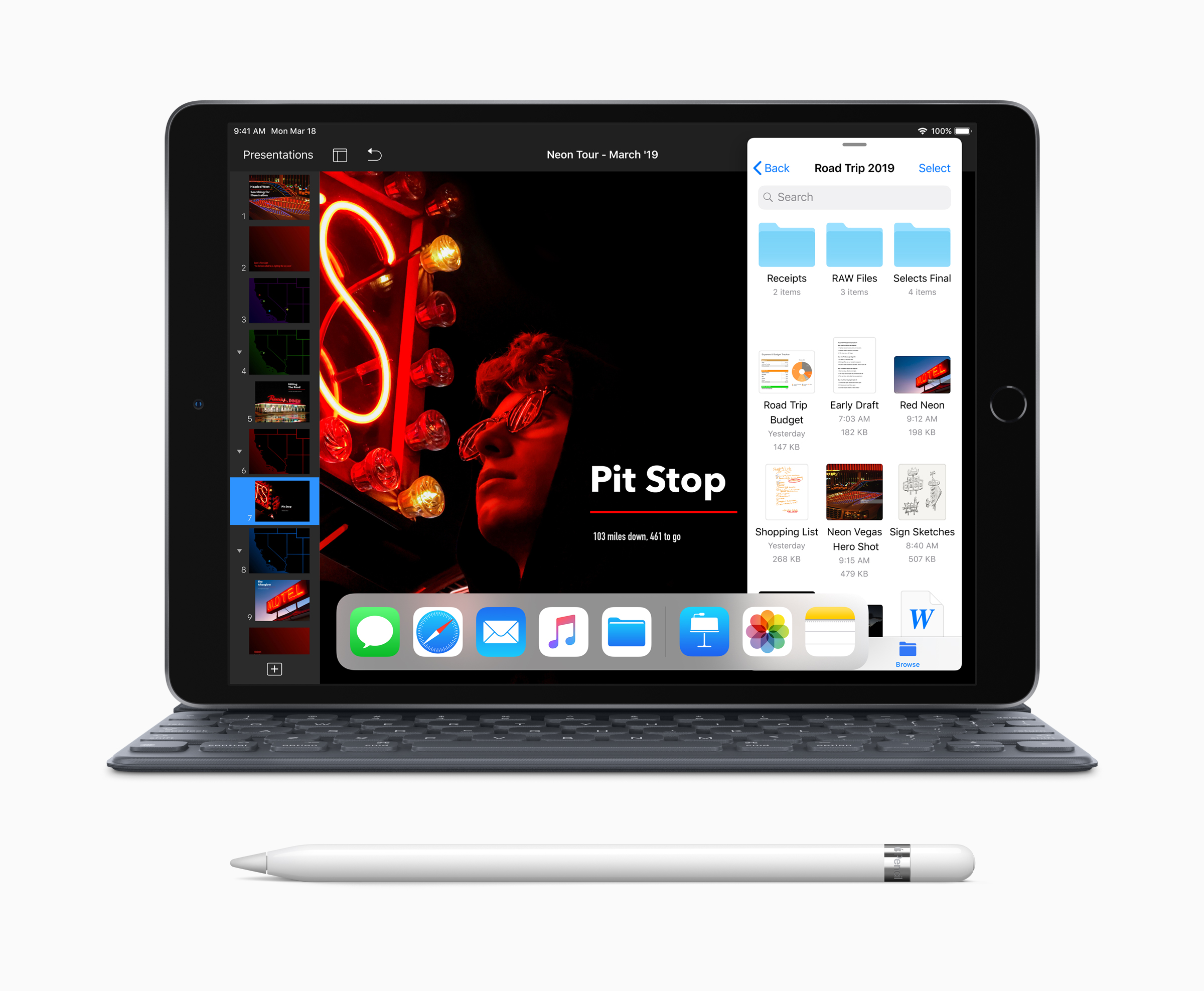- Apple launched a faster new iPad Air on Monday that supports Apple Pencil and Apple’s Smart Keyboard.
- While it bears some similarities to the 11-inch iPad Pro, there are some differences when it comes to performance, identity verification, and other features.
Apple quietly unveiled two new iPads on Monday: a revamped 10.5-inch iPad Air and an all-new iPad mini. The 10.5-inch iPad Air starts at $499 and supports accessories like the Apple Pencil and Apple’s Smart Keyboard. It also runs on the same A12 Bionic processor found in Apple’s latest iPhones.
It’s another example of Apple bringing features it initially launched on the pricier iPad Pro to its more affordable iPad models. Last March, for example, it debuted the $329 entry level iPad which includes support for Apple Pencil as well.
Here’s a closer look at how Apple’s new iPad Air compares to the similar-sized 11-inch iPad Pro.
Size and weight

When it comes to size, the Pro measures 9.74 inches tall, 7.02 inches wide, and 0.23 inches thin, while the new 10.5-inch iPad Air is 9.8 inches tall, 6.8 inches wide, and 0.24 inches thin. That makes the Air slightly taller, narrower, and thicker than the Pro.
They also both weigh around the same, with the iPad Pro weighing 1.03 pounds and the Wi-Fi model of the new Air weighing just one pound.
Display

Thanks to its thinner bezels, Apple's smaller iPad Pro (pictured above alongside the 12.9-inch version) manages to pack a slightly larger display into a body that's around the same size as the new iPad Air.
Among the biggest differences between the iPad Air's 10.5-inch screen and the iPad Pro's 11-inch screen, aside from its design, is that the Air lacks Apple's ProMotion technology. ProMotion is a feature Apple debuted on the iPad Pro in 2017 that boosts the screen's refresh rate, which should make the screen more fluid and responsive.
Like the more expensive Pro, the 10.5-inch iPad Air also has a wide color display and supports Apple's TrueTone technology, which enables the screen's white balance to adapt to the lighting in the user's current environment.
As far as sharpness goes, the screens on both tablets each clock in at 264 pixels per inch.
Performance

The new iPad Air runs on Apple's A12 Bionic processor and Neural Engine, which is the same chipset that powers the new line of iPhones unveiled by Apple in September. This processor should make the new Air powerful enough to run augmented reality apps, games, and photo-editing software with ease.
The iPad Pro is powered by the company's A12X Bionic processor designed specifically for Apple's high-end tablets. The extra power should make the iPad Pro more suitable for those who intend to use their tablet for power-hungry work-related tasks like creating 3D models.
Apple Pencil and Smart Keyboard

The new iPad Air is compatible with the first-generation Apple Pencil, while the Pro works with the company's second-generation accessory. The newer Apple Pencil features a more compact design and support for a double tap gesture that makes it possible to swap out tools without setting it down.
The Air is also compatible with Apple's Smart Keyboard that connects to the tablet through its Smart Connector port. But the Air only works with the standard Smart Keyboard, not the Smart Keyboard Folio which covers both the front and back of the iPad when closed. That's reserved for the Pro models only.
Cameras

Apple's pricier tablet also comes with more powerful cameras than those on the new Air.
The 11-inch iPad Pro features a 12-megapixel rear camera with an f/1.8 aperture and a quad LED TrueTone flash, which is meant to evenly light the scene. It also supports wide color capture among other characteristics not found on the iPad Air. The iPad Air, comparatively, includes an 8-megapixel rear camera with an f/2.5 aperture.
When it comes to the front-facing camera, the iPad Air has a standard 7-megapixel camera while the Pro features a 7-megapixel TrueDepth camera that supports Face ID and Portrait Mode.
Authentication

The iPad Air still has Apple's Touch ID home button, meaning you can still unlock the device and authenticate Apple Pay purchases by resting your finger on the sensor.
The iPad Pro includes the Face ID facial-recognition system that Apple first introduced on the iPhone X, which makes it possible to unlock the tablet just by looking at it.
Pricing and configurations

The 64GB configuration of the Wi-Fi only iPad Air is priced at $499, while the 256GB model costs $649. Cellular models with the same storage options are priced at $629 and $779 respectively.
The Wi-Fi only 11-inch iPad Pro starts at $799 for 64GB of storage, $949 for 256GB, $1,149 for 512GB, and $1,549 for 1TB. If you add cellular, the pricing breaks down as follows: $949 for 64GB, $1,099 for 256GB, $1,299 for 512GB, $1,699 for 1TB.

